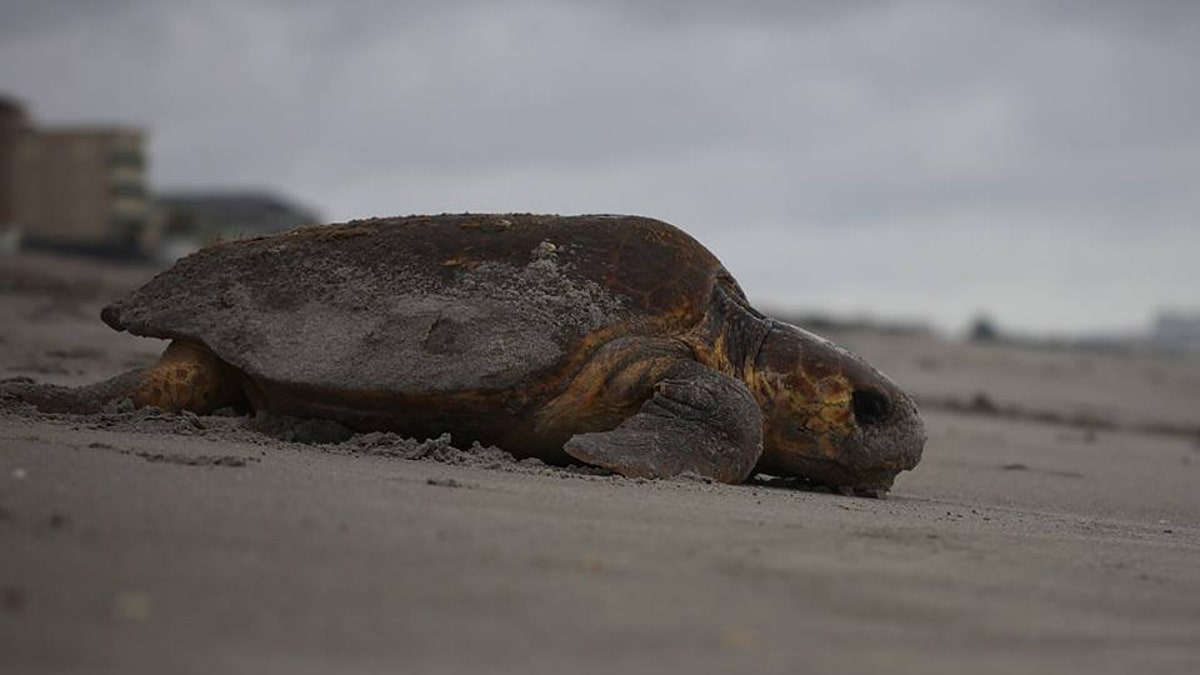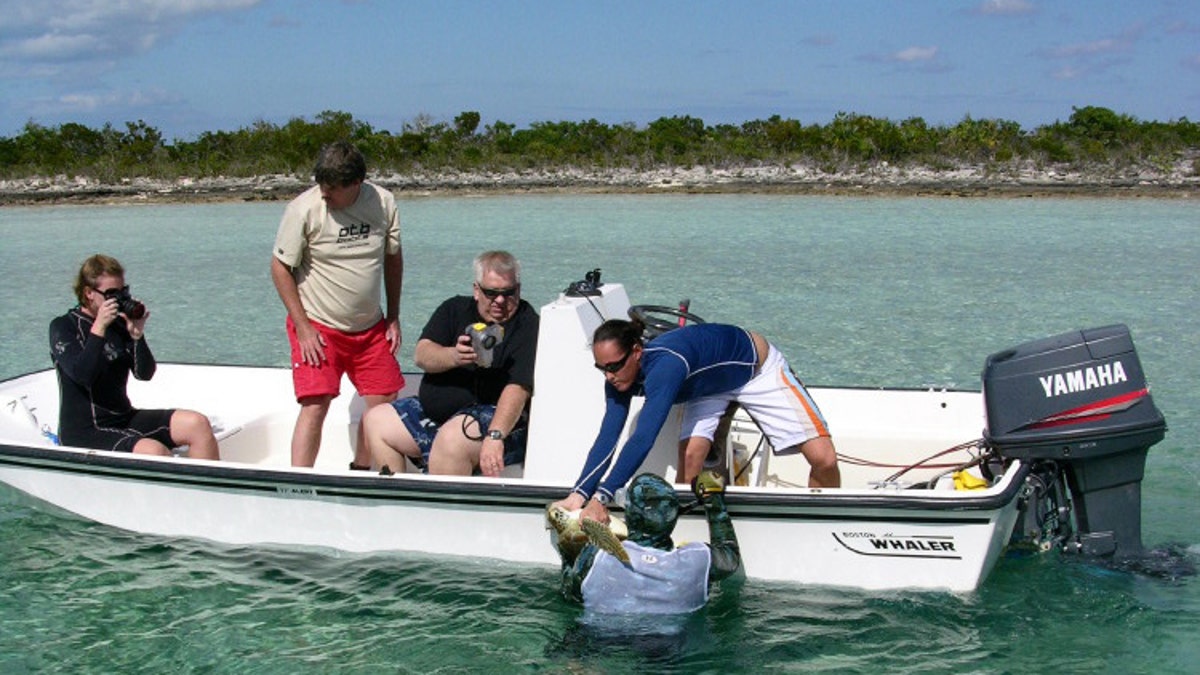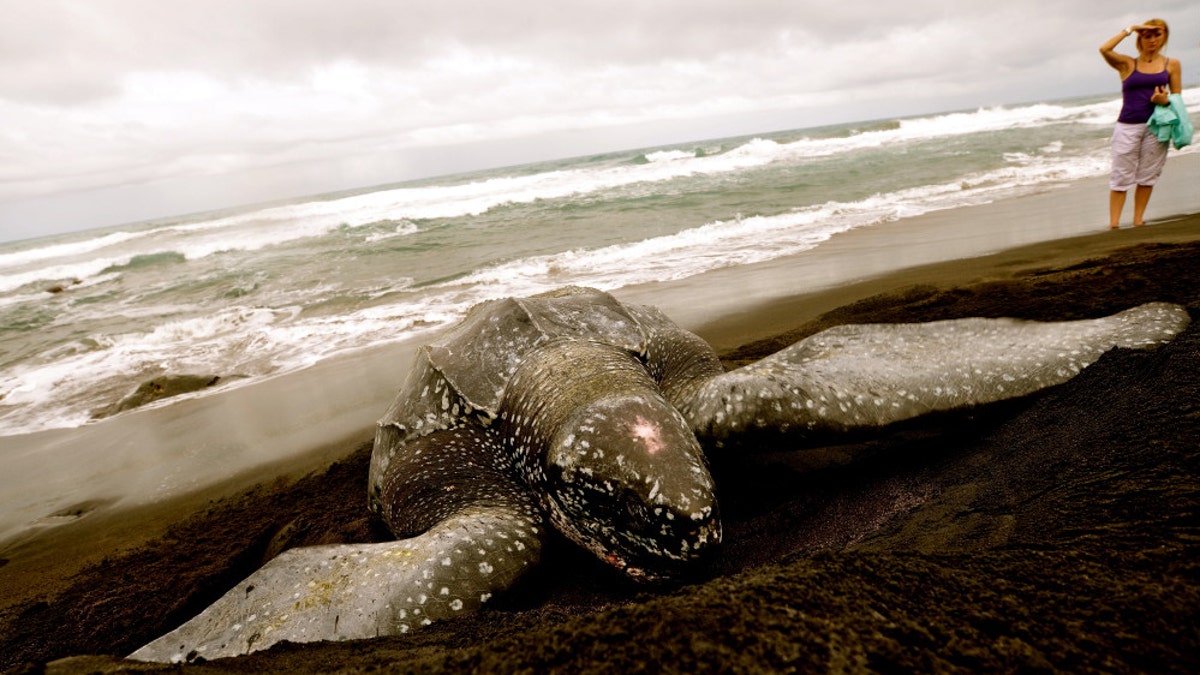Resorts and conservation agencies throughout Florida and the Bahamas and Caribbean afford various opportunities for travelers to experience the primitive, humbling rituals of sea turtle nesting and hatching. Just to see one of the prehistoric behemoths, which can weigh in at up to 2,000 pounds, thrills even the most wildlife-blasé.
On a recent trip, I got to witness a whole new generation of sea turtles come to life.
Three fellow travelers and I arrived to Galley Bay resort on the Caribbean island, Antigua, in midnight blackness and decided to have a nightcap in the open-air bar. As we were winding down from a day of travel, a resort staff guy popped up and asked our help with a nest of hatching sea turtles.
Being Floridians, we immediately identified the turtles as leatherbacks (the largest of sea turtle species) and saw the problem was a spotlight on the beach. We repeatedly asked to shut it off, but instead he handed us a flashlight to lead the hatchlings to sea.
The four of us and staffers finally rounded up the 20-some babies, determined to head toward the spotlight.
The adventure exhausted and enchanted us, and suddenly there was another nest emerging, but the flashlight had burned out. So using cell phones and powers of persuasion, we coerced the hatchlings, the size and charm of a baby’s footprint, into the sea.
If you're thinking about making a trip to see sea turtles hatch or see them in their natural habitat, it's good to know what to expect.
This list works its way from most observational to most interactive experiences. You don’t necessarily have to enjoy them in this order, but the steps will prepare you in the best way.
1. STEP 1:

(Chelle Koster Walton)
A good place for families to begin sea turtle education is in Florida, where eco-consciousness is heightened and programs most formalized and closely regulated. The Turtle Hospital in Marathon in the Florida Keys, treats injured adults and nurses hatchlings.
More than 100 injured sea turtles check in here for later release every year. Most of their injuries stem from monofilament line, plastic bags, and other trash in the water, so here’s an important part of the educational process. Visitors to the Turtle Hospital get a close-look at the insides of sea turtles that have ingested harmful debris.
In the “hospital bed” tanks, visit recovering patients and permanent residents during 90-minute guided tours. Feed the permanent patients, and if you're lucky, hold a hatchling – most likely to happen in the summer and early fall. Call ahead—tours are sometimes cancelled because of medical emergencies.
2. STEP 2:

(Chris Horace/Sea Turtle Preservation Society)
Along Florida’s East Coast, certified agencies do turtle walks. In the Melbourne Beach area, I witnessed the laborious nesting procedure of a loggerhead turtle one balmy June night.
You must make reservations well before your visit in June or July (now is not too early for next summer), to join the Sea Turtle Preservation Society nesting tours. The area sees more than 6,000 nests each summer, so you’re practically guaranteed a sighting.
After a brief classroom overview of the three types of local sea turtles – loggerhead, leatherback, and green – you next assemble at the beach after dark and enact full blackout (no lights or flash photography).
The night we participated, we hadn’t gotten through our educational pre-program before a beach patroller announced a crawl. As instructed, we filed quietly down to the beach. By the time we got there, however, we discovered it was a “false crawl;” the mother loggerhead had changed her mind for whatever reason. She returned to the sea leaving her trademark tractor-like trail behind.
Soon another expecting sea turtle clamored up the beach, and we could stand behind her to watch as she slowly, methodically dug her deep hole then dropped her soft, ping pong ball-sized eggs into the warm summer sand. She then arduously covered the hole and returned to the sea in a ritual as old and miraculous as the beach itself.
3. STEP 3:

(Chelle Koster Walton)
In Cat Island, Bahamas, I went on a tagging roundup of green turtles. This a Bahamian-wide project that Mark Keasler -- a nature-lover and 20-year employee of Fernandez Bay Village resort -- pitched in on to monitor the local population, which was once decimated by islanders who killed them for their meat.
Keasler is happy to take interested guests on his roundups any time of the year, although summer is better weather-wise.
“Actually touching and seeing these animals in person goes a long way in helping them survive –especially for kids,” he says. “Once you have seen, touched, and swam with them in the wild, it helps when it's time to go in your pocket to save an endangered creature.”
A group of 10 of us split into two boats and skimmed shallow mangrove flats, eyes peeled. We saw several of the dark shadows we learned to identify as turtles flitting by. The trick was to get one of them isolated, keep it sighted and contained between the two boats until it tired, at which point Keasler jumped in to chase it down with snorkel and fins.
It took an hour to round up our one tag for the day. Keasler hoisted it into the boat with our help. Tagged, pictured, and admired, it went back to the sea to continue the story of its life.
4. STEP 4:

(Galley Bay Resort & Spa)
Two resorts in Antigua under the same management, Galley Bay and St. James Club, advise interested guests to sign up for sea turtle duty. Resort teams monitor egg-laying and are able to give guests estimated hatching dates and times from July to October. The resorts organize a “watch” with the guests to witness the early-morning (usually) sweet wonder of emerging hatchlings.
5. STEP 5:

(Randy Kerr Photography / Rosalie Bay Resort)
Before Beverly Deikel moved to Rosalie Bay on the Eastern Caribbean island of Dominica and decided to build a boutique eco-resort, locals camped on the black-sand beach awaiting sea turtles’ nesting so they could poach the eggs and butcher the meaty adult.
Not only were the eggs a food source, but worth lots of money as a purported aphrodisiac. Deikel began the Rosalie Sea Turtle Initiative (RosTI) to raise local awareness and money for conservation.
Today, as per her plan, local agencies have taken over the outreach education and conservation mission, but Heitzel continues to offer resort guests opportunity for learning about and experiencing the birthing process via the spin-off Nature Enhancement Team (NET).
Here, as in Antigua, I could sign up for a wake-up call for nesting or hatching events. Then I also signed on with turtle expert Simon George, a NET biologist, to patrol the beaches after dark. This is the definition of “nightlife” in Rosalie Bay.
Sadly enough, we found only one vacated nest, washed out by erosion, that night. Later we sat in his beach hut to study reports of the 60-some nests patrollers had been monitoring.
In his quiet, scientific manner, George familiarized us with the leatherbacks, green turtles, and hawksbills that nest and hatch March through October.
Telephone glitches and a tropical storm precluded a wake up call for me that visit, but other guests gushed about their star-struck opportunity to experience the miracle of being that close to wildlife in-the-making.
